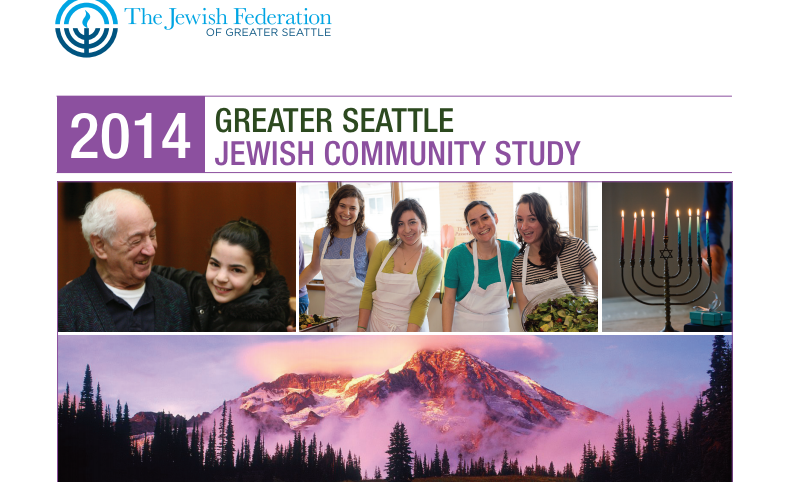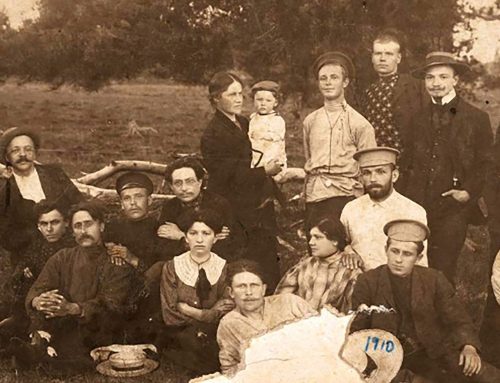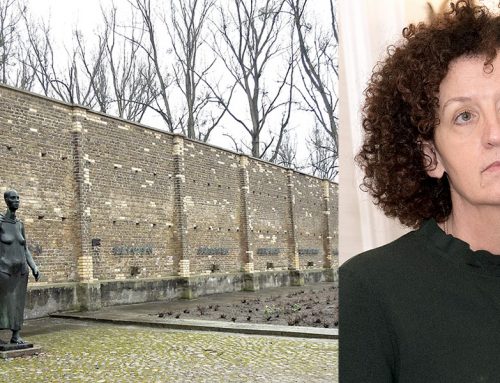
The study of Seattle’s Jewish community was conducted by Brandeis University’s Cohen Center for Modern Jewish Studies.
More bad news? That’s great!
When the 2000-01 National Jewish Population Survey found that the number of Jews in the U.S. had declined by hundreds of thousands since the previous survey ten years before, that was great! Well, not great exactly, but kind of a comfort. Everyone expected bad news, and Jewish publications practically had to print supplements just to have room for all the doom-and-gloom essays. When better data appeared a few years later, showing that the population hadn’t fallen by hundreds of thousands, but actually had rise by a similar amount, hardly anyone had much to say.
When I teach at the city-wide Jewish adult education program Torahthon every fall, sometimes I teach one class on a depressing topic (the rise of antisemitism on campuses, for example), and a second class on a more cheerful topic (Birthright Israel works!). I know what will happen: depressing topic, fill the classroom. Cheerful topic, empty it.
The authors of the recently-released 2014 Greater Seattle Jewish Community Study are very judicious–praising the community for its strengths, focusing on some problems, suggesting plausible approaches to strengthening the community.
But really, is the Community Study good news or bad news? Can sociology give us tools to parse all the numbers?
Burstein’s Tips
Here are four things to keep in mind as you try to reach your own conclusions about the study’s results:
- First, keep some historical perspective. You might think it’s terrible that only one-third of Jewish households belong to a synagogue, as the 2014 Community Study reports. But in the most recent comparable Seattle area study, in 2000, it was one-fifth. Only 79 percent attended some kind of a seder in 2014? In 2000, it was 55 percent.
- Second, think not just about quantity but about quality as well. Much of the Jewish education provided to Jewish children in the Seattle area wasn’t as good as it could be, either year. But the teaching materials, teacher training, curriculum, and so on have improved a lot, and will continue to do so.
- Third, Jewish organizations watch each other and often copy what seems to work. Guess which Jewish school emphasizes girls’ sports on its website? The Northwest Yeshiva High School. Probably not a noteworthy aspect of Jewish girls’ educational experience in the old days, but it seems to matter now. Not to mention the number of Reform congregations providing Talmud study for adults…..
- Finally, there are all the relatively new organizations that provide Jews with new ways to express their Jewishness, and new ways to feel a sense of connection to Jewish life–from the Kavana Cooperative as a new type of Jewish community, to Taglit Birthright Israel, a tremendously effective way of connecting young adults to Israel, to Music of Remembrance, the Seattle Jewish Chorale, StandwithUs Northwest, JConnect, the expanded cultural arts program at the Stroum JCC, the many new congregations, and so on.
The response to the new Community Study does not have to be “gevalt!” Perhaps, in line with Jewish tradition in responding to news, it could be as enthusiastic as “hmmmmm….”
Links for Further Exploration
- The Federation is hosting two Town Hall meetings with the Brandeis University research team to discuss the findings of the community study. Click here for more info on these meetings, taking place Feb. 11 and 12.







Perceptive and fun! Thanks. Here’s some doom and gloom for the sake of popularity:
Having been in London, England for the decade – from the last census until now – I find myself about to return to the NW. I’ll so miss the many yiddisher shops, supermarkets and restaurants. It’s been fun here. I hope that by the next census we’ll see that Seattle has a growing and bustling network of such businesses, because it is sorely needed.
I’m glad you’ve enjoyed London and its many yiddisher shops. But–and I hate to say this–I don’t think you’re going to see many here. That’s because if you think about all those people moving here from all over the country, many of them are young, and they’re separated by an extra generation or two from their Euopean ancestors. For them, the “old country” is may very well be Dallas or Los Angeles, and even if it’s New York, younger people will have grown up in circumstances very different from their grandparents. Indeed, my guess is that if you asked Jews under 40 what a “yiddiser shop” is, most would have no idea. (I have some experience of this with undergraduates.)
The community is very dynamic, and you’ll find lots of new and creative organizations if it’s Seattle you’re returning to, but yiddisher, probably not. Why England and not here? I’m not sure, but I have the sense that the English Jewish community is smaller, more concentrated geographically, and more traditional–that may help them hang on to some kinds of tradition.